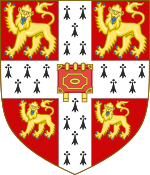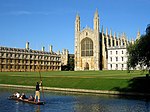Hawking's time traveller party
Stephen HawkingTime travel

On June 28, 2009, British astrophysicist Stephen Hawking hosted a party for time travelers in the University of Cambridge. The physicist arranged for balloons, champagne, and nibbles for his guests, but didn't send out the invites until the next day, after the party was over.The party was held at the Gonville and Caius College on Trinity Street (52° 12' 21" N, 0° 7' 4.7" E) at 12:00 UT on June 28, 2009. Hawking patiently awaited the arrival of time-traveling guests whom he planned to invite later. However, despite his efforts, no one appeared. Nevertheless, Hawking remained hopeful, keeping the possibility open for his invitation to be accepted in the future.
Excerpt from the Wikipedia article Hawking's time traveller party (License: CC BY-SA 3.0, Authors, Images).Hawking's time traveller party
Trinity Street, Cambridge Newnham
Geographical coordinates (GPS) Address Website Nearby Places Show on map
Geographical coordinates (GPS)
| Latitude | Longitude |
|---|---|
| N 52.205833333333 ° | E 0.11797222222222 ° |
Address
Gonville & Caius College (University of Cambridge)
Trinity Street
CB2 1TA Cambridge, Newnham
England, United Kingdom
Open on Google Maps









